BIOGRAPHY
| Franks, Rachel | An uncommon hangman |
Return to top
COOKING
| Miscellaneous | Super easy air fryer |
Return to top
GENERAL FICTION
| Benn, Tom | Oxblood |
| Brownlow, John | Seventeen |
| Cantrell, Christian | Scorpion |
| Carmichael, Jay | Marlo |
| Clarke, Lucy | One of the girls |
| Drewe, Robert | Nimblefoot |
| Durrant, Sabine | Sun damage |
| Fison, Julie | One punch |
| Gibson, Katerina | Women I know |
| Green, Sophie | The bellbird river country choir |
| Haddad, George | Losing face |
| Henry-Jones, Eliza | Salt and skin |
| Janakiramanan, Neela | The registrar |
| Jenner, Natalie | Bloomsbury girls |
| Jiwa, Bernadette | The making of her |
| Khalid, Zain | Brother alive |
| Martin, Madeline | The librarian spy |
| Moshfegh, Ottessa | Lapvona |
| O’Loghlin, James | Criminals |
| Palmer, Bobby | Isaac and the egg |
| Reilly, Matthew | The two lost mountains |
| Reynolds, Alison | The near Daphne experience |
| Riwoe, Mirandi | The burnished sun |
| Rowley, Steven | The guncle |
| Silva, Daniel | Portrait of an unknown woman |
| Starr, Kimberley | The map of night |
| Van Pelt, Shelby | Remarkably bright creatures |
 One of the girls by Lucy Clarke
One of the girls by Lucy Clarke
A trip abroad for six 30-something British women leads to tragedy, in this decent if flawed psychological thriller from Clarke (The Blue). Professional dancer-turned-yoga instructor Lexi Lowe is getting married to Ed Tollock in a month, so her close friend and maid of honor, Bella Rossi, throws a bachelorette weekend on the Greek Island of Aegos. Bella’s girlfriend, Fen, has an aunt who allows the women to use her secluded villa on the island while she’s away. Ed’s quirky sister, Eleanor, accompanies them, as do a childhood friend of Lexi and Bella’s, Robyn Davies, and Lexi’s yoga student turned friend, Ana. Alternating chapters explore the innermost thoughts of the women, each of whom has juicy secrets involving the others in the group. Gradually, jealousy and resentment surface, and someone ends up taking a fatal tumble. The plot, which takes several colorful if farfetched twists, builds to a rushed conclusion followed by an epilogue that wraps up things a tad too neatly. Clarke keeps the pages turning, but this character-driven story focuses more on the relationships among the women than the whodunit aspects. Liane Moriarty fans may want to check this one out. Publisher’s Weekly, April 2022
 Brother alive by Zain Khalid
Brother alive by Zain Khalid
In this auspicious debut, Khalid unfurls a beguiling story involving a Staten Island imam’s secrets. Salim Smith has adopted three boys, all sons of his inner circle of confidantes from his days at the Islamic University of Markab in Saudi Arabia. In their cramped apartment above Salim’s Staten Island mosque, the oldest son, Youssef, struggles along with his brothers to understand their father’s behavior, as Salim shuns human touch, locks himself in his room writing mysterious letters, and dramatically loses weight. Then as Youssef gets ready to start college at Columbia, he learns Salim had been thrust into a parental role he has no interest in. Salim’s story is fleshed out in the second section, which takes place decades earlier, with Salim living in Markab and being coopted by a powerful Saudi mufti, Ibrahim Sharif, into preaching to marginalized community members known as the “Unsettled.” Meanwhile, Ibrahim conducts dangerous experiments on the castoffs. In the final section, Salim returns to Saudi Arabia in search of a cure for his lingering health problems from Ibrahim’s regimen, and finds that Ibrahim has built a luxurious futuristic city on top of Markab. Youssef and his brothers follow and are soon working for Ibrahim, jeopardizing their planned reunion with Salim. Khalid brilliantly reveals new shades of truth from each character’s point of view, and perfectly integrates the many ideas about capitalism and religious extremism into an enthralling narrative. It’s a tour de force. Publisher’s Weekly, May 2022
 The Guncle by Steven Rowley
The Guncle by Steven Rowley
In this heartwarming, hilarious novel from Rowley (The Editor), an erstwhile sitcom star ends up taking care of his niece and nephew. Patrick O’Hara is four years out of the limelight and living in Palm Springs, Calif., when he learns his best friend and sister-in-law, Sara, has died after a long illness. While Patrick is in Connecticut for the funeral, widower Greg confesses he’s developed an addiction to painkillers. Patrick agrees to watch over Greg’s children, Maise and Grant, nine and six, while Greg spends a few months in rehab. As Patrick navigates his grief and responsibilities for the children, who call him their “Guncle” (or “GUP,” for gay uncle Patrick), he contemplates a comeback. Fortunately, he has help from a new agent; the “throuple” of three men next door; and his sister, Clara, despite Clara’s skepticism over the value of Patrick’s screwball antics for the children. Rowley finds humor and poignancy in the snappy narrative, ordered by a series of “Guncle Rules” (“number five,” applying to the adult content in Patrick’s apps: “If a gay man hands you his phone, look only at what he’s showing you”) and deepened by lessons the grief-stricken children learn via Patrick from generations of gay life. Readers will find this delightful and illuminating. Publisher’s Weekly, February 2021
Return to top
HISTORICAL FICTION
| Fowler, Karen Joy | Booth |
| Harcourt, Emma | The brightest star |
| Smith, Wilbur A. | The new kingdom |
| Walker, Julie | Bonny & Read |
| Weir, Alison | Elizabeth of York |
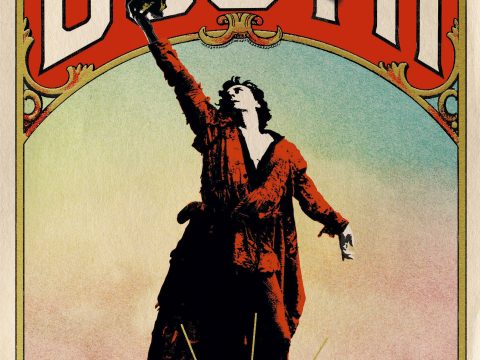 Booth by Karen Joy Fowler
Booth by Karen Joy Fowler
The Booth in the title of Booker-shortlisted Fowler’s razor-sharp latest (after We Are All Completely Beside Ourselves) is John Wilkes Booth, Abraham Lincoln’s assassin. The author approaches “Johnny” obliquely, through his family circle in Maryland. Booth’s father, Junius Brutus Booth, is a Shakespearean actor whose masterly Richard III and “towering genius” are offset by episodes of “mad freaks.” (He’s also a drunken failure of a father.) Cycles of depression triggered by Junius’s endless indiscretions and prolonged absences define Booth’s mother. Three siblings in this theatrical family are central: eldest sister Rosalie is “painfully shy” and has scoliosis; brother Edwin, like Junius a “star” actor, is prone to drink; and beautiful sister Asia is “strong and stormy,” “ice and iron.” Others, such as the Halls—a Black family, some of whom are free and others enslaved—also play parts. All illuminate the depressingly bizarre rearing of Johnny and the disgruntled, attention-seeking actor he becomes. As Congress passes the 13th amendment to abolish slavery and General Lee surrenders, Booth’s acting career falters and his Southern sympathies rise, building toward the fateful night that will forever define him and his family. Fowler sets the stage in remarkable prose, and in her account of the Booth family’s move from rural Maryland to Baltimore in 1846 (“Instead of frogs, choruses of drunks sing on the street after dark. Instead of birdcalls, factory whistles”), she subtly conveys the depth of her characters, noting that Johnny, at seven, takes on the “city name” Wilkes. Throughout, the nuanced plot is both historically rigorous and richly imagined. This is a winner. Publisher’s Weekly, January 2022
Return to top
MYSTERY
| Arlidge, M. J. | Truth or dare |
| Barclay, Linwood | Look both ways |
| Bennett, Michael | Better the blood |
| Bolton, Sharon | The dark |
| Bowen, Rhys | Wild Irish rose |
| Bryndza, Robert | Fatal witness |
| Christopher, Lucy | Release |
| Cleeves, Ann | The rising tide |
| Connolly, John | The furies |
| Dodd, Christina | Point last seen |
| Green, John M. | FRAMED |
| Higashino, Keigo | Silent Parade |
| Horowitz, Anthony | The twist of a knife |
| Jackson, Lisa | The girl who survived |
| Kellerman, Faye | The lost boys |
| La Plante, Lynda | Dark rooms |
| Lackberg, Camilla | Sweet revenge |
| Lagercrantz, David | Dark Music |
| Mackintosh, Clare | The last party |
| Mahmood, Imran | All I said was true |
| Martin, Faith | A fatal night |
| Martin, Faith | A fatal end |
| Mercier, Mercedes | White noise |
| Petraitis, Vikki | The unbelieved |
| Pomare, J. P. | The wrong man |
| Rose, Karen | Quarter to Midnight |
| Ware, Ruth | The it girl |
| Warner, Dave | After the flood |
| Williams, Sue I. | Death at the Belvedere |
 The rising tide by Anne Cleeves
The rising tide by Anne Cleeves
Indomitable Inspector Vera Stanhope, whose lonely youth with a lawless father has given her a unique approach to crime and punishment, returns in a heartbreaking case. On the Holy Island of Lindisfarne, off the northeast coast of England, the past drives the present. A small group of old school friends have been meeting there, at Pilgrims’ House, every five years for half a century. They first came to the island on a school trip organized by a young teacher hoping to “challenge their preconceptions” on “a kind of secular retreat.” They bonded on that first trip, but what may have really brought them together was the death of Isobel, one of their number, at their first reunion five years later. At that time, Annie and Daniel were married and mourning the loss of a baby. Since then, Lou and Ken have also married, and now Ken has dementia. Rick has become a famous television personality, and Philip, a priest. Now, after a night of drinking and reliving the past, Annie, long divorced from Daniel, finds Rick’s body hanging in his room. The fact that Rick was recently fired from his job over allegations of sexual impropriety does not convince Annie that her notably vain friend would commit suicide and leave himself to be found naked. Soon after Vera and her crew are called in, she confirms that Rick was smothered and hanged. The Holy Island is an island only when the tide covers the causeway; indeed, trying to drive through the water caused Isobel’s death all those years ago. Although there are certainly present-day reasons why someone might have killed Rick, Vera and her team do a deep dive into the past and find an unexpected motive. A character-driven puzzler that ends in a painful denouement. Kirkus Review, August 2022
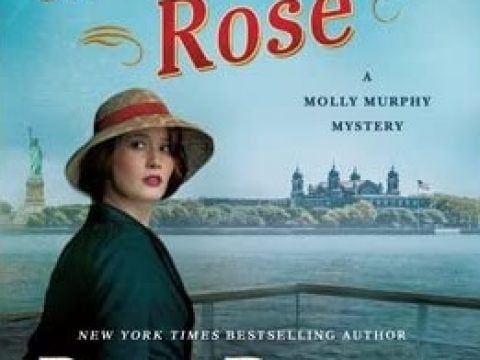 Wild Irish rose by Rhys Bowen
Wild Irish rose by Rhys Bowen
Set in 1907, bestseller Bowen’s uneven 18th Molly Murphy mystery (after 2017’s The Ghost of Christmas Past), coauthored with daughter Broyles, takes Molly to Ellis Island one cold winter day to help distribute warm clothing to immigrants. There Molly encounter a near-ringer for herself, Rose McSweeney, who—as Molly’s husband, police captain Daniel Sullivan, tells her that evening—is suspected of fatally stabbing a man in an Ellis Island storeroom. The corpse carries no identification, the murder weapon is missing, and the story of the witness who claims he saw Rose leaving the murder scene doesn’t entirely add up. Herself an Irish immigrant once falsely accused of a crime, Molly is determined to clear the woman’s name despite Daniel’s opposition. Hiding her plans, she tracks Rose to the boarding house in which the police are keeping watch on her and strikes up a friendship. Well-drawn family dynamics and Molly’s feisty personality compensate only in part for a mystery in which her blindness to obvious clues isn’t credibly explained by her emotional investment in the case. Still, series fans will enjoy catching up with Molly and company. Publisher’s Weekly, January 2022
 The furies by John Connolly
The furies by John Connolly
PI Charlie Parker is back in a pair of short novels with a ghostly twist. Parker, as his fans know, is an ex-cop and a PI whose wife, Susan, and daughter Jennifer were murdered, and Jennifer’s ghost still haunts him. The characters in both these tales range from the offbeat to the literally Strange: The sisters Dolors and Ambar Strange run Strange Brews, a coffee shop in Portland, Maine, in the first novel, The Sisters Strange. Each yields her bed to a lowlife named Raum Buker, of whom Parker notes, “Gradually, like fecal matter falling down a drain, gravity brought Raum to Portland.” Buker once had a mouth that “resembled the ruins of Dresden” but now has “installment-plan teeth” with what Parker calls a puppy-killing grin. Back in Pennsylvania, a “poisonous” old man named Edwin Ellerkamp is found choked to death, his mouth and throat engorged with coins dating as far back as the seventh and eighth centuries. The killer is a man of indeterminate age (Generations? Centuries?) named Kepler, who desperately seeks one particular coin—“with the right coin,” he believes, “even gods could be bought.” Kepler sees and feels himself rotting away as he reads decades-old newspapers, so maybe finding that precious coin will cure what ails him. In the second novel, The Furies, Parker reluctantly takes on the case of Sarah Abelli, the socially shunned widow of a femicidal killer. Meanwhile, Lyle Pantuff and Gilman Veale stay at Braycott Arms, a “shithole” hotel suitable for their ilk. The woman-hating Pantuff has “one of those faces that couldn’t have drawn more cops if it were shaped like a donut and covered with sprinkles.” At one point, he’s “crouched like a gargoyle at the end of his bed.” Veale keeps hearing a child, although none are allowed at Braycott Arms, and it creeps him out. No one can find any child, not even in the basement, so readers will be creeped out too. Maybe it’s a ghost, because someone gets the shock of a lifetime. Connolly skillfully hints at the occult while keeping Parker grounded and sane. The author imbues both stories with melancholy and deft touches of dark humor. As with all the Charlie Parker books, this is fine fodder for crime fans. Kirkus Review, August 2022
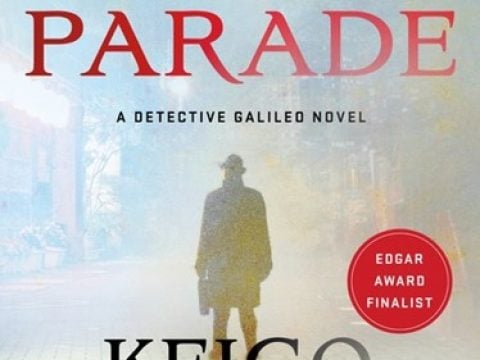 Silent Parade by Keigo Higashino
Silent Parade by Keigo Higashino
In Higashino’s stellar fourth mystery translated into English featuring physics professor Manabu Yukawa (after 2016’s A Midsummer’s Equation), the Tokyo police call in Yukawa to consult on a baffling case. The remains of Saori Namiki, a budding singing star who disappeared at age 19 three years earlier, have been found in a burned-down house. The house also contained the body of the stepmother of Kanichi Hasunuma, the prime suspect in the murder of a 12-year-old girl 23 years earlier. Charges were brought against Hasunuma, but were ultimately dismissed, leaving him free, and possibly the killer of Namiki as well. The challenge of finding more than circumstantial evidence against Hasunuma intrigues Yukawa, who must also crack a new homicide whose victim may have been killed in a sealed room. Higashino never allows plot to overwhelm his characterizations and explores the unintended consequences of law enforcement reliance on confessions to obtain convictions. In addition to brilliant twists, he provides shout-outs to impossible crime fiction classics. Golden age fans will welcome this flawless blend of police procedural and fair-play detection. Publisher’s Weekly, September 2022
Return to top
NON FICTION
| Adlington, L. J. | The dressmakers of Auschwitz |
| Aldridge, Mark | Agatha Christie’s Poirot |
| Benson, Simon | Plagued: Australia’s two years of hell – the inside story |
| Dessaix, Robert | Abracadabra |
| Fahey, Warren | Dead & buried |
| Farinetti, Oscar | Serendipity |
| Gunn, Ellis | Rattled |
| Swan, Norman | So you want to live younger longer? |
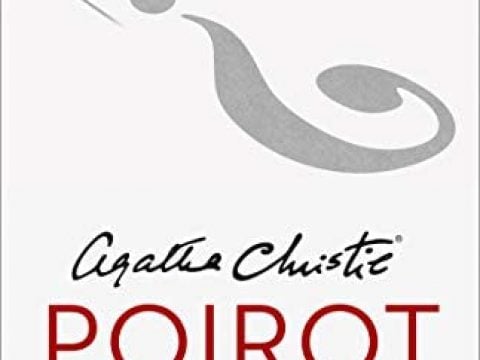 Agatha Christie’s Poirot by Mark Aldridge
Agatha Christie’s Poirot by Mark Aldridge
Historian Aldridge (Agatha Christie on Screen) celebrates the centenary of Agatha Christie’s fictional detective Hercule Poirot with a comprehensive yet lighthearted romp through his very busy career. Working chronologically, Aldridge takes readers through the Poirot oeuvre, starting with the 1920 publication of The Mysterious Affair at Styles, for which Christie needed a detective “unlike those that had gone before,” and ending with such modern Poirot torchbearers as film adaptations of Murder on the Orient Express and Death on the Nile. Aldridge offers a detailed overview of Poirot’s appearances on the page, and also discusses radio and stage versions of the Belgian detective, as well as a fictionalized biography written by Anne Hart in 1990 and nods to recent graphic novels and computer games in which he figures. Christie-devotees will be piqued by the novelist’s thoughts on Poirot’s egg-shaped head (“When people say to me ‘Which way up is this egg?’ do I really know? I don’t… but nevertheless I know that he has an egg-shaped head”), several novels’ cover art in various editions over the decades, and excerpts from reviews of Christie’s novels. This quirky, trivia-filled look at a touchstone of detective fiction will have Christie fans young and old in heaven. Publisher’s Weekly, April 2021
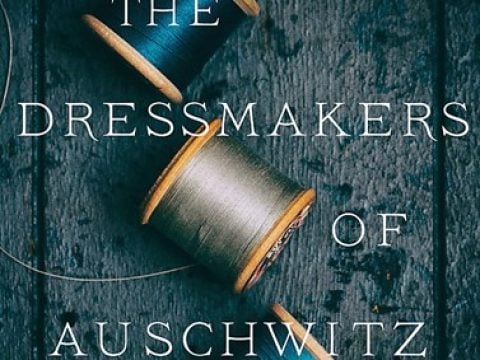 The dressmaker of Auschwitz by Lucy Adlington
The dressmaker of Auschwitz by Lucy Adlington
The tale of surviving the “hideous anomaly” of a fashion salon run by Hedwig Höss, the commandant’s wife. Adlington, a British fashion historian, digs into the stories of “seamstresses who defied Nazi attempts to dehumanise and degrade them by forming the most incredible bonds of friendship and loyalty.” The author, who fictionalized this material in her young adult novel, The Red Ribbon, continues, “as needles were threaded and sewing machines whirred they made plans for resistance, and even escape.” Adlington emphasizes the importance of clothing in the making of the Nazi Aryan mystique, from the brownshirts to the swastika to the folk garments that Jews were prohibited from wearing to the high fashion that Nazi wives demanded. Several of the young seamstresses came from Bratislava, the products of devout families, and many went to school together during the 1930s as antisemitic rhetoric heated up. One of the young women, Marta Fuchs, was a trained cutter who moved to Prague in the late 1930s to pursue her dream of haute couture. At the same time, Jewish firms were increasingly subject to Aryanization. “The main goal of Aryanisation went far beyond simply causing distress and hardship,” writes the author. “The prize…was actual ownership of Jewish businesses, as well as elimination of competition.” Ultimately, Fuchs and the other women and their families were transported to labor and death camps. At Auschwitz, Höss established a salon near her villa, run largely by Fuchs, called the Upper Tailoring Studio. Fuchs incorporated in the team of seamstresses her friends and acquaintances as a way to save them from punishing labor and certain death in the gas chambers. Adlington poignantly delineates how closely clothing and dignity were linked, especially in the camps, where the women were denuded and deloused mercilessly. The author also clearly shows the sickening insouciance with which Nazi wives would plunder the camp warehouse, crammed with stolen clothes and possessions from the enslaved workers. A fresh, moving Auschwitz survival story involving a remarkable group of women. Kirkus Review, August 2022
Return to top
SCIENCE FICTION & FANTASY
| Miro, J. M. | Ordinary monsters |
| Miscellaneous | South of the sun |
| Novik, Naomi | A deadly education |
| Sanderson, Brandon | The alloy of law |
| Simmons, Dan | Hyperion |
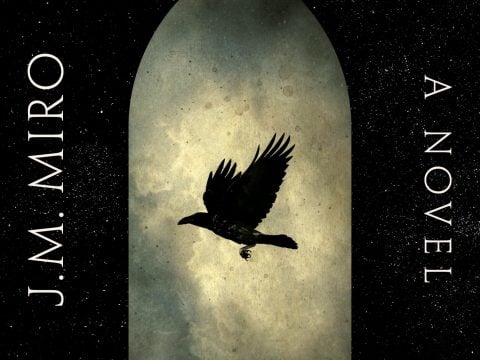 Ordinary monsters by J.M. Miro
Ordinary monsters by J.M. Miro
In Victorian London, two foundling boys with unusual talents find themselves at the center of an ancient battle between the worlds of the living and the dead. Charlie Ovid is a 16-year-old mixed-race orphan in Reconstruction-era Mississippi who has been convicted of murdering a White man. So far, he has been executed three times for his crime, but in spite of the nightly beatings inflicted upon him ever since, Charlie remains physically unscathed, his uncanny healing power a mystery even to himself. Marlowe is another orphan, found as a baby gently glowing in a freight train at a dead woman’s breast and raised by two adopted mother figures, the timid Eliza and the muscular, tattooed Brynt. “The shining boy,” as he comes to be called, is raised in the slums of London and then as part of a sideshow act in a traveling circus crisscrossing the American heartlands. His origins, his powers, and his fate are as much mysteries to him as Charlie’s cycle of suffering and healing, until they’re each visited by Frank Coulton and Alice Quicke, a detective duo employed to find remarkable children like Charlie and Marlowe and bring them back to the mysterious Cairndale Institute in the far north of Scotland, where they will be protected and trained in the uses of their powers. Cairndale, a labyrinthine manor house on the shores of a dark, fathomless loch, turns out to be as full of secrets as the children themselves, and Charlie and Marlowe—along with a Japanese dustworker named Komako; Ribs, the invisible girl; and shy Oskar and the flesh giant Lymenion who sleeps under his bed—must unravel the true motives of their inscrutable guardian, Dr. Henry Berghast, before Jacob Marber, a figure of tremendous power who used to be an unusual child just like them, can tear apart the seal between the worlds of the living and the dead. A fast-paced novel whose action and intrigue make short work of its daunting page count, this tome is clearly set up to be Book 1 of a larger series. However, while the world is intricate and the characters finely drawn, there is such a sheer volume of people, plotlines, backstories, and lore being introduced that the autonomy of the novel itself suffers. Epic in scope and size, this book sets itself up for many sequels to come. Kirkus Review, May 2022
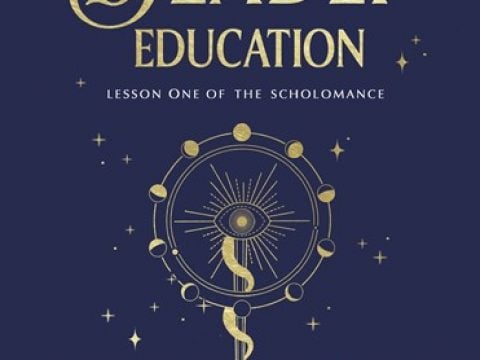 A Deadly Education by Naomi Novik
A Deadly Education by Naomi Novik
Novik (Spinning Silver) puts a refreshingly dark, adult spin on the magical boarding school setting of the spellbinding first fantasy in her Scholomance trilogy. The students of Scholomance, a boarding school for sorcerers, must weather survival-of-the-fittest trials, fighting off the Lovecraftian monsters known as maleficaria (or “mals”) that routinely break in to eat students. Graduation is the greatest challenge of all, and requires the students to fight their way through the sea of mals clustered outside the building. Dark sorceress El (short for Galadriel) has a plan for how she’ll make it through the gates alive next year: she’ll learn to control her affinity for destruction, make allies by impressing other students with her abilities, and stockpile magical energy. But monster-slayer Orion Lake throws a wrench in the works. He keeps saving El before she can display her talents, and has killed so many lesser mals that the ones left are huge—and hungry. El and Orion must strike up an alliance to save themselves and their schoolmates from monstrous destruction. Readers will delight in the push-and-pull of El and Orion’s relationship, the fantastically detailed world, the clever magic system, and the matter-of-fact diversity of the student body. This is a must-read for fantasy fans. Publisher’s Weekly, June 2020
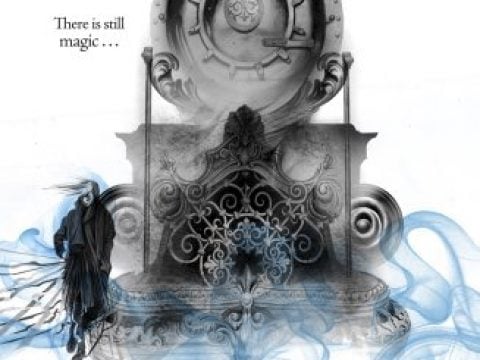 The alloy of law by Brandon Sanderson
The alloy of law by Brandon Sanderson
Sanderson gives the world of Scadrial the Wild West treatment in this rollicking adventure tale set 300 years after the popular Mistborn epic fantasy trilogy. This “side deviation” gives up swords for guns, and while the three-part magic system of Allomancy, Feruchemy, and Hemalurgy continues to play a crucial role in the story, Scadrial itself is on the cusp of modernity. Wax, a lawkeeper gifted with both Allomantic and Feruchemical powers, has returned to the circular city of Elendel to take his uncle’s place as Lord Ladrian. When a gang of thieves known as the Vanishers begins stealing from railcars and kidnapping ladies, Wax, his miscreant buddy Wayne, and the intelligent and pretty Marasi decide they are honor-bound to uncover the perpetrators and save the victims. Part Sherlock Holmes, part X-Men, this exciting stand-alone adventure is full of close shaves, shootouts, and witty banter. Publisher’s Weekly, August 2011
Return to top
New additions to eBooks at SMSA
EBOOKS
| Biography | Alderton, Dolly | Everything I know about love |
| General novels | Beech, Isobel | Sunbathing |
| General novels | Down, Jennifer | Bodies of light |
| General novels | Frew, Peggy | Wildflowers |
| General novels | Henry-Jones, Eliza | Salt and skin |
| General novels | Martin, Madeline | The Librarian Spy |
| General novels | Silva, Daniel | Portrait of an unknown woman |
| Mystery | Cleeves, Ann | The rising tide |
| Mystery | Hinton, S. D. | The brothers |
| Mystery | Petraitis, Vikki | The unbelieved |
 Everything I know about love by Dolly Alderton
Everything I know about love by Dolly Alderton
British journalist and former Sunday Times dating columnist Alderton (Man Repeller) chronicles her love life in this wryly humorous essay collection. She writes about flirting as an awkward teenager via instant messages (“It was a complex Edwardian dance of courtship and I was a giddy and willing participant”), college parties (“I scan the room for boys with working limbs and a detectable pulse”), being single in a world that seems comprised solely of couples, and escaping a Tinder-facilitated threesome. In other essays she creates lists—things she’s scared of (plane food, STDs), the most annoying things people say (“how do you find the time to do all those tweets?”), safe topics for dinner conversations (“celebrity deaths”)—and deals with her own weight issues. Alderton writes with self-deprecating humor throughout, though her most moving essay focuses on the funeral of her best friend’s sister, who died of leukemia. A hit in the U.K., this clever collection will likely speak to American audiences as well. Publisher’s Weekly, November 2019
 Portrait of an unknown woman by Daniel Silva
Portrait of an unknown woman by Daniel Silva
Silva’s latest Gabriel Allon novel is a bit of a throwback—in the best possible way. One-time assassin and legendary spymaster Gabriel Allon has finally retired. After saying farewell to his friends and colleagues in Israel, he moves with his wife, Chiara, and their two young children to a piano nobile overlooking Venice’s Grand Canal. His plan is to return to the workshop where he learned to restore paintings as an employee—but only after he spends several weeks recovering from the bullet wound that left him dead for several minutes in The Cellist (2021). Of course, no one expects Gabriel to entirely withdraw from the field, and, sure enough, a call from his friend and occasional asset Julian Isherwood sends him racing around the globe on the trail of art forgers who are willing to kill to protect their extremely lucrative enterprise. Silva provides plenty of thrills and, as usual, offers a glimpse into the lifestyles of the outrageously wealthy. In the early books in this series, it was Gabriel’s work as an art restorer that set him apart from other action heroes, and his return to that world is the most rewarding part of this installment. It is true that, at this point in his storied career, Gabriel has become a nearly mythic figure. And Silva is counting on a lot of love—and willing suspension of disbelief—when Gabriel whips up four old master canvases that fool the world’s leading art experts as a lure for the syndicate selling fake paintings. That said, as Silva explains in an author’s note, the art market is rife with secrecy, subterfuge, and wishful thinking, in no small part because it is almost entirely unregulated. The author’s longtime fans may breathe a sigh of relief that this entry is relatively free of politics and the pandemic is nowhere in sight. A smart summer escape. Kirkus Review, August 2022
Return to top
AUDIOBOOKS
| Biography | Fowles, Matt | Weekends with Matt |
| General | Candela, Margo | The Neapolitan Sisters |
| Mystery | Cantore, Janice | Breach of honour |
| Mystery | Crowe, Kitt | A poisonous page |
| Mystery | Shroff-Shah, Meeti | A Mumbai Murder Mystery |
| Mystery | Amphlett, Rachel | The lost boy |
| Mystery | Dark, Rylie | Only his |
| Mystery | Thompson, Victoria | Murder on Waverly Place |
| Mystery | Allen, Meri | The Rocky Road to Ruin |
| Mystery | Ruff, Jennifer | Only one wave |
 The rocky road to ruin / Meri Allen
The rocky road to ruin / Meri Allen
Travel blogger and CIA librarian Riley Rhodes, who occasionally works undercover for the agency, is back in her hometown of Penniman, Connecticut, to attend the funeral of her best friend Caroline’s mother, Buzzy, and recover after being reprimanded by her employer for her screw-up in Rome. Riley soon finds Caroline’s brother, Mike, murdered and his tennis-star girlfriend, Angelica, missing. When it looks like Caroline may be a suspect, Riley begins her own investigation, learning that Mike was planning to sell Buzzy’s farm to a land developer. Suspects include those who would profit from the sale, Mike’s present and former jealous girlfriends, and the Brightwoods, who have farmed the land for years. Buzzy also owned the popular Udderly Delicious Ice Cream Shop, which Caroline and Riley are determined to keep open. Using her research and investigative skills, Riley unravels the clues to identify the killer. Delightfully framed by the details of making ice cream and running an ice-cream shop, this cozy mystery series-starter is populated with well-drawn characters living in a vividly described New England town. Booklist, July 2021
 A poisonous page / Kitt Crowe
A poisonous page / Kitt Crowe
In Crowe’s sprightly follow-up to 2021’s Digging Up Trouble, bookshop manager Lexi Jones of tourist town Confection, Ore., is suspicious of the sudden death of real estate agent and chamber of commerce chair Marilyn Freeman. Though imperious Det. Chad Berg is more inclined to regard it as the result of a sudden heart attack, Lexi wonders if it might relate to shady property deals in the area. When Marilyn’s rival, Rachel Nevis, also turns up dead, Lexi is convinced that the two cases are connected and is impelled to investigate when Dash Hagen, the brother of a friend of hers and a former lover of Marilyn and Rachel, becomes the police’s prime suspect in Rachel’s killing. Members of the Macaroons book club are more than willing to assist Lexi, despite Berg’s hostility toward amateurs meddling in official investigations. Winning characters, slapstick interactions between Lexi and Berg, and an offbeat climax will keep readers riveted. Both fans and new readers will look forward to the inquisitive Lexi’s next appearance. Publishers Weekly, May 2022


